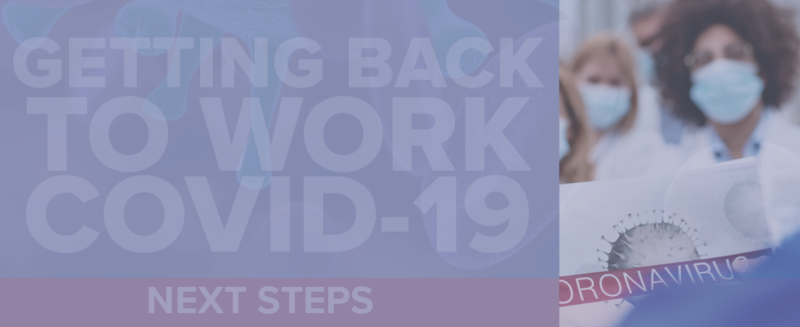Updated CDC Information for Quarantine After Exposure to COVID-19
Last Updated on August 27, 2020
As the coronavirus (COVID-19) pandemic continues, employers are discerning appropriate actions to prioritize health and safety within their workplace. Organizations are responsible for protecting the health of their employees, which can include recommending self-quarantine to employees who have been exposed to COVID-19. An exposure to COVID-19 may take place within the workplace, or an employee may report an exposure outside of the workplace.
This HR Insights article provides an overview of guidance from the Centers for Disease and Prevention (CDC) for quarantine after exposure to COVID-19. This guidance addresses who should quarantine, as well as how long quarantine should last dependent on the scenario.
Employers should continue to monitor current guidance from the CDC and follow recommendations from local health providers.
Quarantine After an Exposure to COVID-19
Quarantine is used to keep someone who might have been exposed to COVID-19 away from others. Quarantine helps prevent spread of disease that can occur before a person knows they are sick or if they are infected with the disease without feeling symptoms. People in quarantine should stay home, separate themselves from others, monitor their health and follow directions from their state or local health department.
Quarantine Timeline
The CDC recommends a quarantine period of 14 days after exposure to COVID-19. The quarantine should start and end at the same time of the day. For example, if starting quarantine at noon on one day, quarantine should end at noon on the 14th day. However, in scenarios where a person has an additional exposure to COVID-19, quarantine may require an extension, as outlined in the scenarios presented in this article.
In an exposure situation, it is possible that a person with a known case of COVID-19 could leave isolation after 10 days, rather than 14, which is earlier than a person who has been quarantined due to the possibility they are infected from an exposure.
Who Should Quarantine
Quarantine is recommended for people who have been in close contact with someone who has COVID-19—excluding people who have had COVID-19 within the past three months.
People who have tested positive for COVID-19 do not need to quarantine or get tested again for up to three months as long as they do not develop symptoms again. People who develop symptoms again within three months of their first bout of COVID-19 may need to be tested again if there is no other cause identified for their symptoms.
What Counts as Close Contact?
A person is considered to have been in close contact in the following situations:
- Has been within 6 feet of someone who has COVID-19 for a total of 15 minutes or more
- Has provided care at home to someone who is sick with COVID-19
- Has had direct physical contact with a person who has COVID-19 (hugged or kissed them)
- Has shared eating or drinking utensils with a person who has COVID-19
- Has been sneezed or coughed on, or received respiratory droplets
from a person who has COVID-19
Quarantine Scenarios
The CDC outlines four scenarios, and when quarantine can end:
Scenario 1: Close Contact With Someone Who Has COVID-19—Will Not Have Further Close Contact
This scenario applies to persons who have had close contact with someone who has COVID-19 and will not have further contact or interactions with the person while they are sick (e.g., co-worker, neighbor or friend).
The last day of quarantine is 14 days from the date of close contact.
Scenario 2: Close Contact With Someone Who Has COVID-19—Live With the Person But Can Avoid Further Close Contact
This scenario applies to persons who live with someone who has COVID-19 (e.g., roommate, partner or family member), and that person has isolated by staying in a separate bedroom. In this situation, this person has had no close contact with the person with COVID-19 since they began isolation.
The last day of quarantine is 14 days from when the person with COVID-19 began home isolation.
Scenario 3: Under Quarantine and Had Additional Close Contact With Someone Who Has COVID-19
This scenario applies to persons who live with someone who has COVID-19 and have started their 14-day quarantine period because of close contact. What if this person ends up having additional close contact with the person who has COVID-19 during quarantine? What if another household member gets sick with COVID-19? Does this person need to restart quarantine?
Yes. This person will have to restart quarantine from the last day they had close contact with anyone in their house who has COVID-19. Anytime a new household member gets sick with COVID-19 and this person has close contact, they will need to restart quarantine.
The last day of quarantine is 14 days after additional close contact.
Scenario 4: Lives With Someone Who Has COVID-19 and Cannot Avoid Continued Close Contact
This scenario applies to persons who live in a household where they cannot avoid close contact with a person who has COVID-19. These situations would include someone who is providing direct care to the person who is sick, doesn’t have a separate bedroom to isolate the person who is sick or lives in close quarters where they are unable to keep a physical distance of 6 feet.
This person should avoid contact with others outside the home while the person is sick, and quarantine for 14 days after the person who has COVID-19 meets the criteria to end home isolation.
Fourteen days can be added to the date the person with COVID-19 ends home isolation. After the additional 14 days conclude, quarantine can be discontinued.
For More Information
The recommendations provided in this article should not be considered legal advice. Employers should consult with local legal counsel for legal advice. Employers should continue to monitor current guidance from the CDC and follow recommendations from local health care providers. Contact MyHRConcierge for additional COVID-19 resources.

